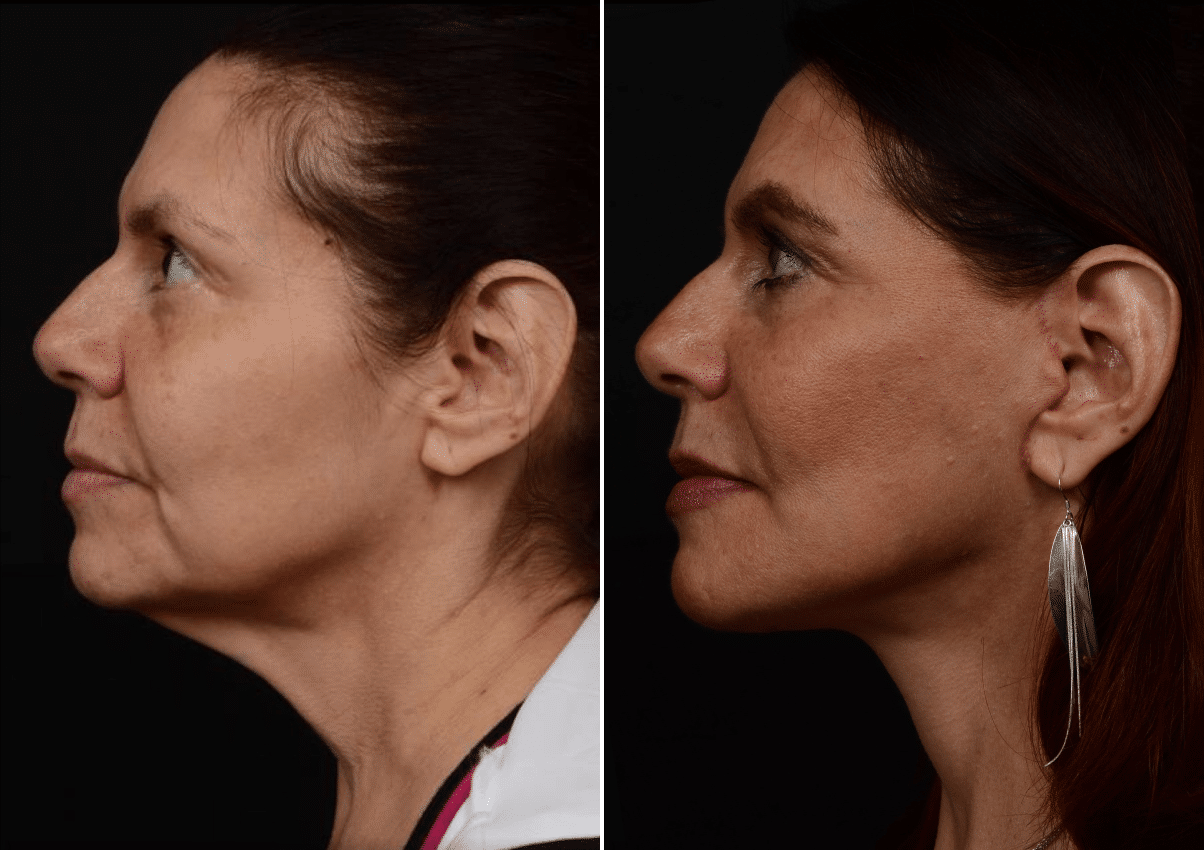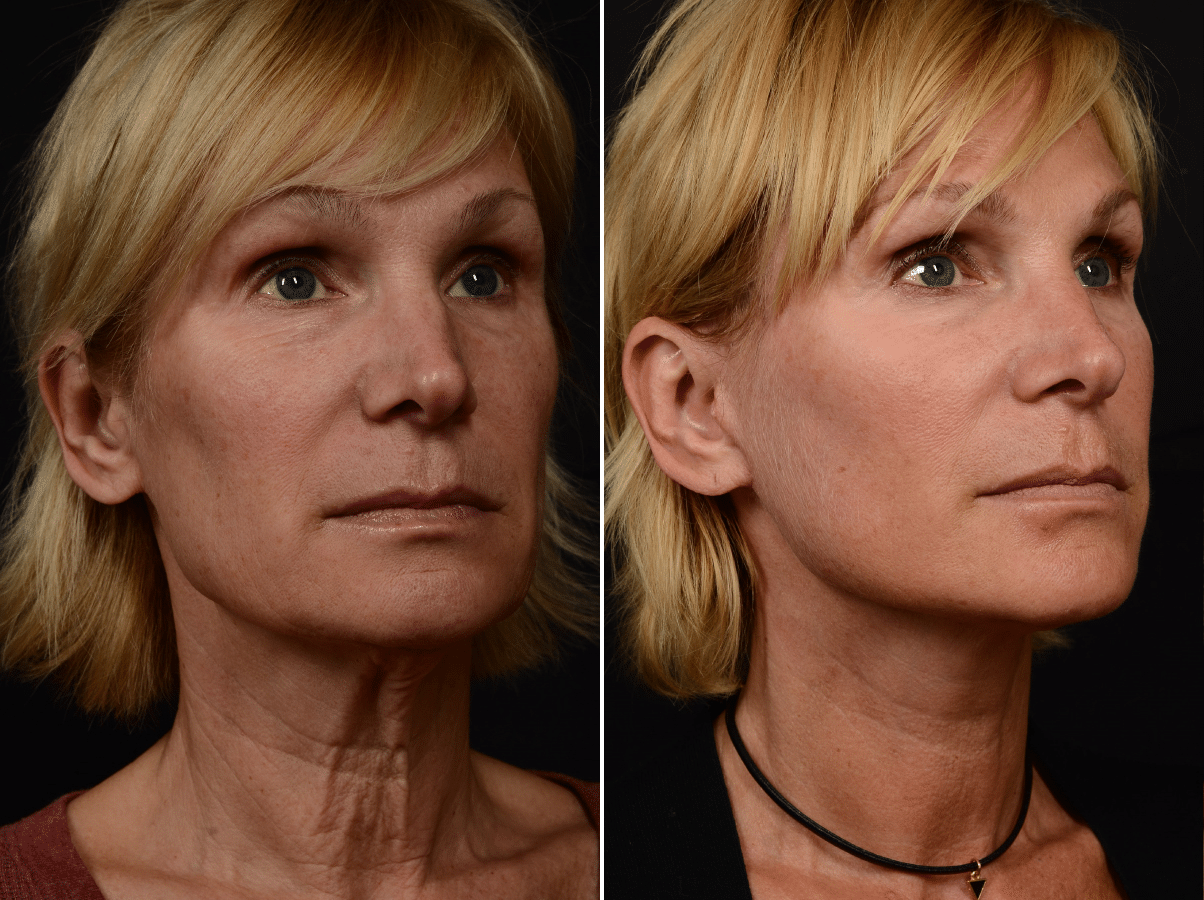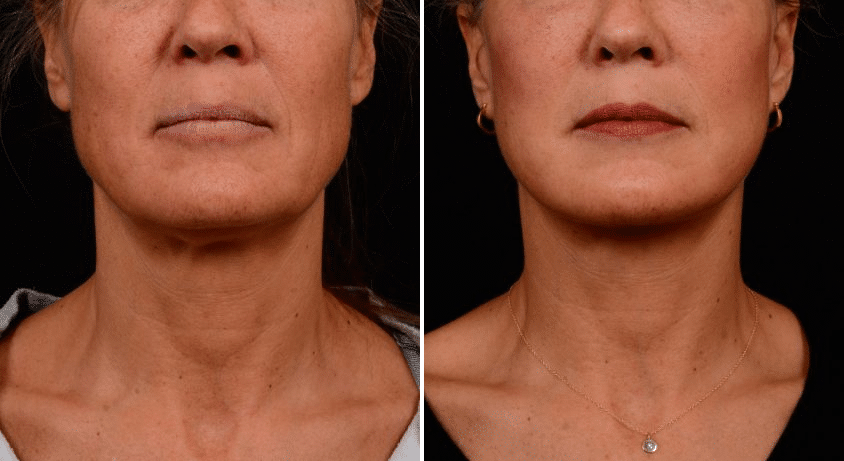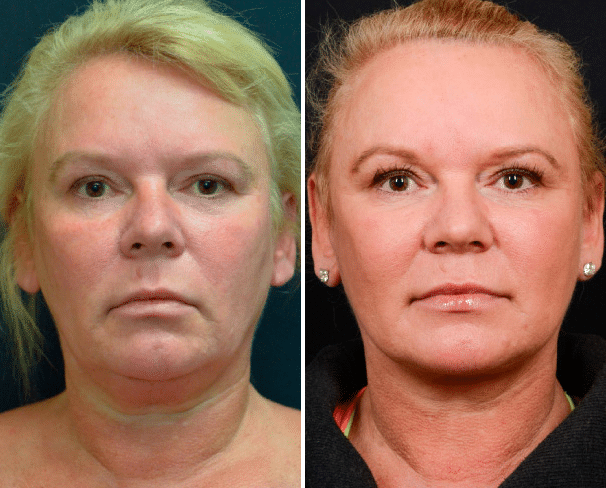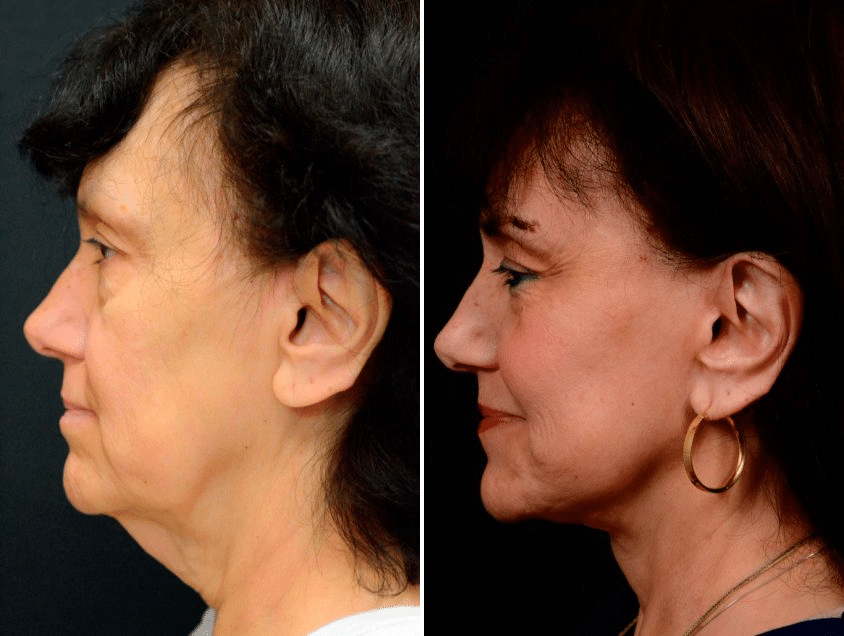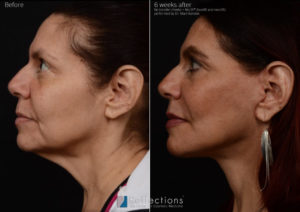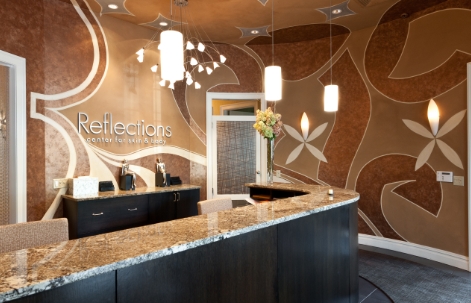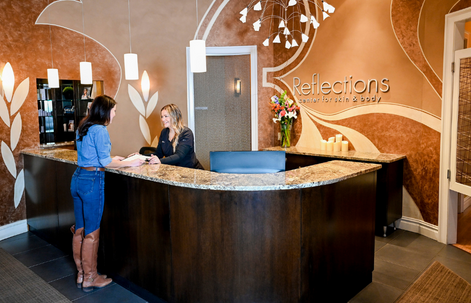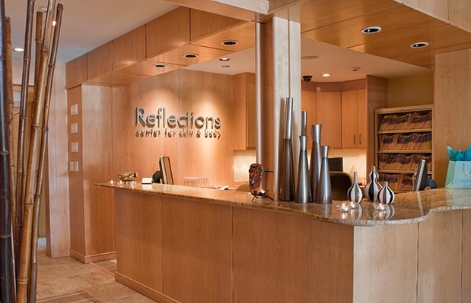At Reflections, facelifts and other facial surgeries are performed by Dr. Joe Fodero, a facial plastic surgeon who joined our practice after 25 years of experience as one of the top plastic surgeons in New Jersey.
A lower facelift is the only procedure that addresses changes to all three of these types of tissues along the lower cheeks and jawline. Your board-certified plastic surgeon will restore muscles and fat to their more youthful positions, creating a more defined jawline. Excess skin will be lifted back into place, reducing sagging along the jaw. The combination of these three changes will rebuild a solid foundation for a younger appearance for many years to come.
Lower Facelift Quick Facts
- Lifted cheeks
- Improved smile lines
- Tighter jawline
- Smoother complexion
Lower Facelift Surgery in New Jersey
A lower facelift (rhytidectomy) addresses the jawline and cheeks, as well as jowling and smile lines. It lifts the cheeks to create these changes, but does not address anything above the cheeks or as far down as the neck, for that reason Dr. Fodero might recommend a more comprehensive treatment plan for you, which might include an NvLift for both face and neck, or perhaps fat transfer or upper eyelid lift surgery as add-ons.
There are 3 types of changes that contribute to an older-looking neck and face:
Skin Damage – wrinkles, uneven texture, and pigmentation changes, as well as skin laxity and thinning
Sagging Muscles – loosening of connective tissues and loss of muscle tone
Volume Changes – the neck tends to accumulate more fat as we age, while our faces tend to lose fat
A lower facelift is the only procedure that addresses changes to all three of these types of tissues along the lower cheeks and jawline. Your board-certified plastic surgeon will restore muscles and fat to their more youthful positions, creating a more defined jawline. Excess skin will be lifted back into place, reducing sagging along the jaw. The combination of these three changes will rebuild a solid foundation for a younger appearance for many years to come.
Do I Need a Lower Face Lift Surgery?
Patients have 4 options when it comes to face lifts, in terms of invasiveness, and because we are home to both plastic surgeons and a team of cosmetic doctors specializing in non-surgical face lifts, we want to give you the full and honest picture of each option:
Option #1 : The most invasive is a Lower Facelift Surgery, which involves skin, muscle, and fat being surgically tightened and lfited.
It can be performed under general anesthesia, or in most cases this procedure can be done under Comfort Calm Local Anesthesia as well. The results are the most transformative, long-lasting, and natural-looking when we involve all of the layers of tissue in the face in this way. However, the recovery is also more intense, the cost is higher, and you may not need this yet, especially if you’re still in your 40’s or younger.
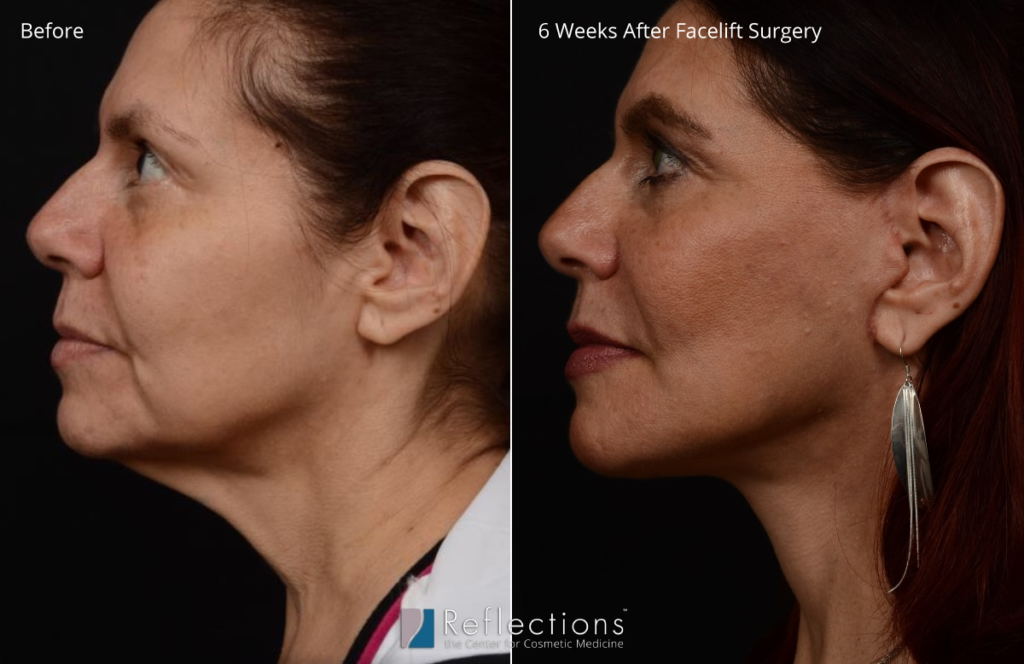
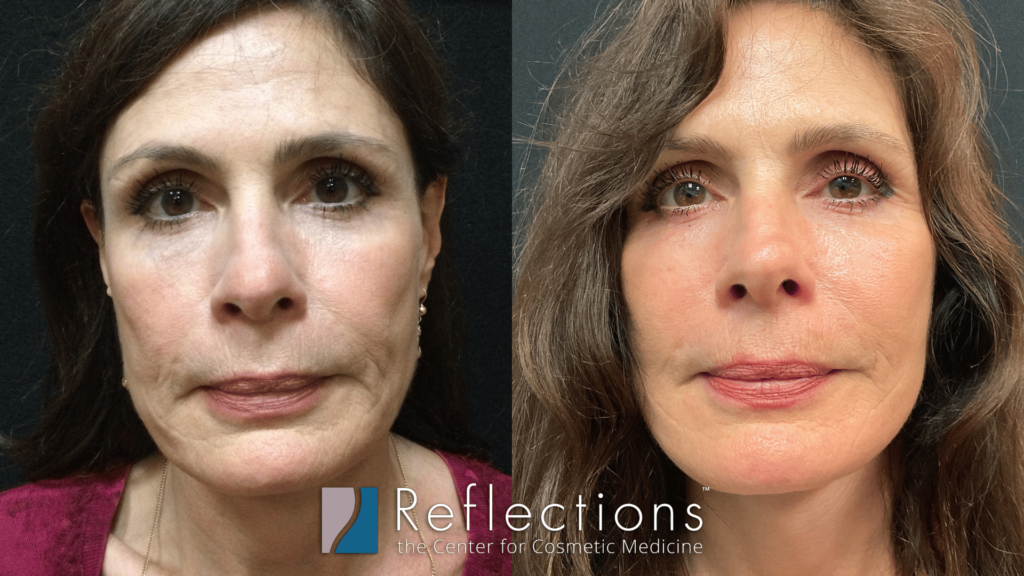
Option 2: Slightly Less Invasive Surgery – A Mini Lower Facelift
A mini facelift is one that removes loose skin without repositioning or tightening the muscles or SMAS. This is the right choice for a patient who is okay who doesn’t have a lot of muscle looseness (yet). Our muscles are the last part of our face to sag, so for younger patients, fat pad repositioning (lifting) and removing loose skin can create a natural, complete result. This procedure tends to be more affordable than a full facelift due both to shorter time in surgery and because it can be performed under local anesthesia.
Option 3: Not Quite Non-Surgical Skin Tightening
ThermiTight and PrecisionTX are two treatments that are often performed along the jawline and offer the strongest skin-tightening (as opposed to removal) effects we’ve ever seen. They don’t leave big scars (just entry points the size of a pencil eraser or smaller), and they’re performed under local anesthesia. However, they do still require you to wear a compression garment (think balaclava on steroids) for a few weeks. The results are not immediate, which can be a good or bad thing depending upon your desire for discretion. This is the right choice for someone who really doesn’t like their lower face due to excess skin and perhaps even some excess fat in the neck, since laser lipo can easily be performed at the same time. It’s not the right choice if your cheeks are flattening or falling, or if you have bad skin quality (since thin, rough, loose skin tends not to repair itself well, making skin tightening not very effective vs. skin removal, which is always effective).
Option 4: Non-Invasive Skin Tightening, Filler, & Threads
Sofwave, Ulthera, thread lifts, and filler can do amazing things for young patients who are in good health. They tend to be less effective as we age, especially if we haven’t done much to boost collagen or fill in lost volume along the way. In fact, the less you do along the way, the more likely you’ll need a surgery by the time you’re ready to take action. However, these are good choices for patients with limited budget, those who cannot have surgery (either by choice or for health reasons), or who want a modest improvement. These treatments will never be able to give you a facelift result, but they still might be the right choice for you, and we respect that.

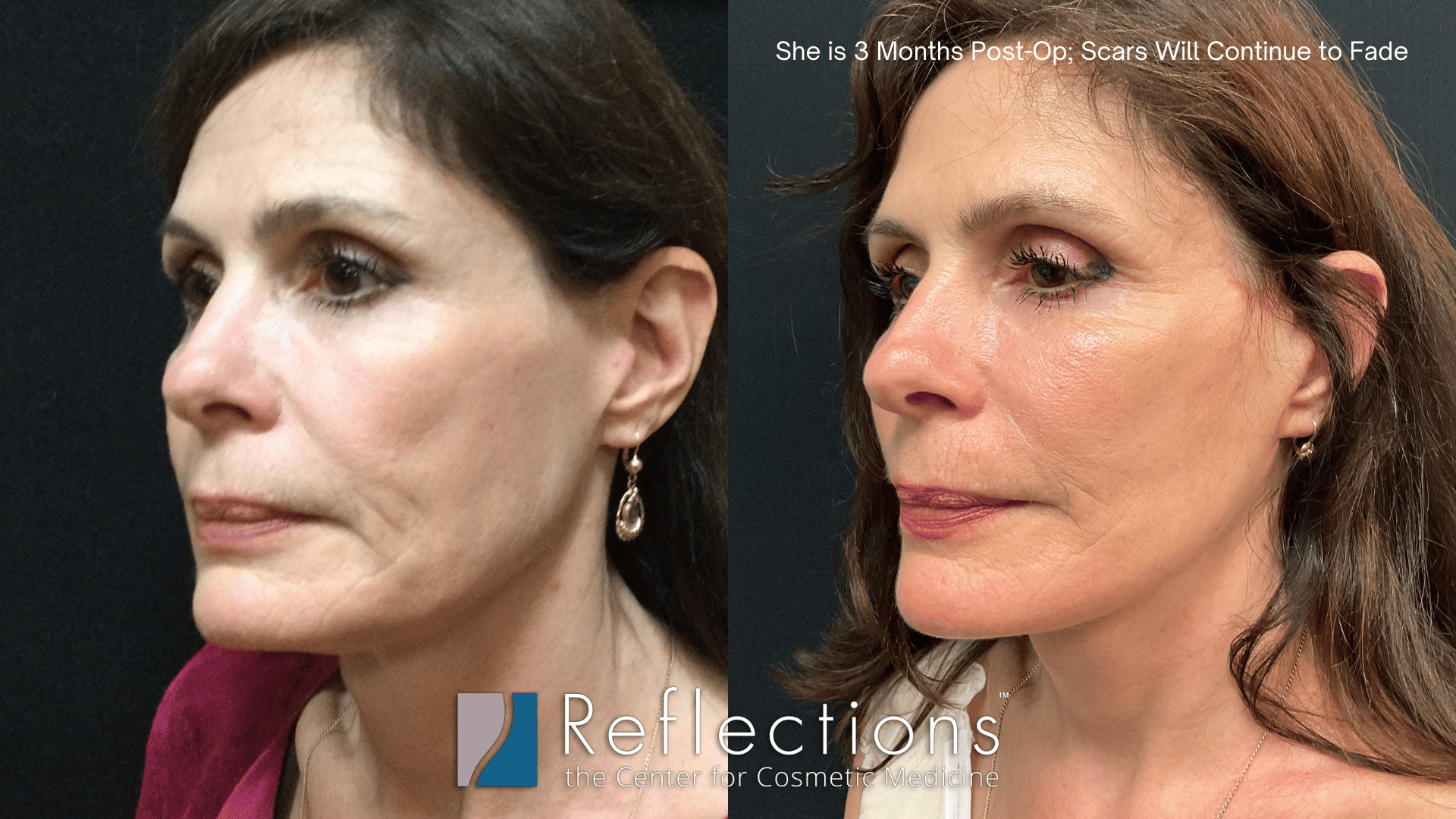
Procedures:
Lower Facelift performed under Comfort Calm Local Anesthesia, 3 Months Post-Procedure (Not Fully Healed at Scar Lines)
View More Facelift Before & After Results
More Before & Afters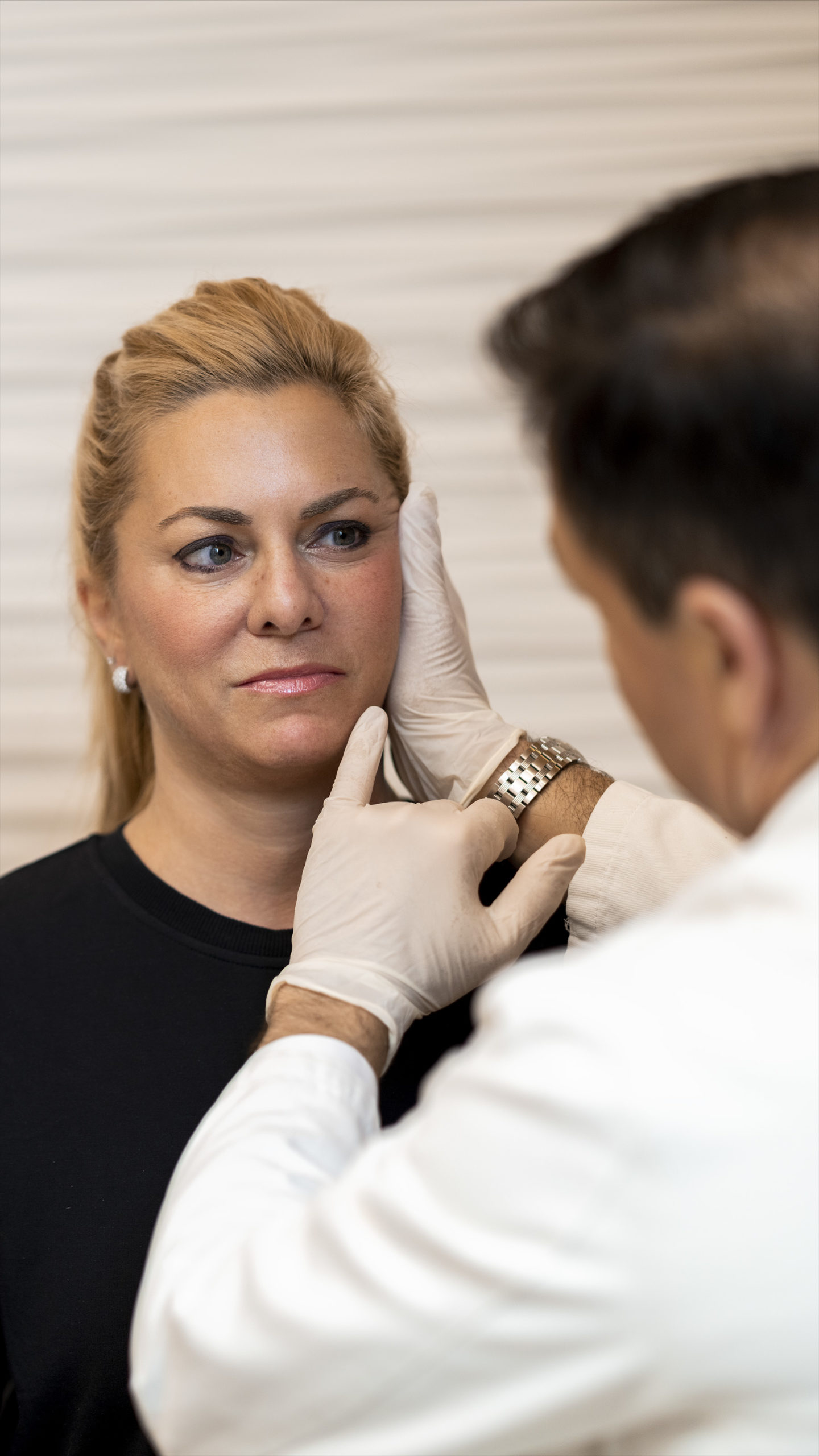

Why Choose Reflections Center for Lower Facelift Surgery
One of the main reasons why you should choose your facelift surgeon carefully is that your results will correlate directly to your surgeon’s skill and experience. It takes a very skilled surgeon to create incisions that are well-disguised within the natural folds of your face, without removing too much or too little. But that’s exactly what is required to get a natural-looking result that will age beautifully.
Dr. Joseph Fodero has almost 30 years of experience performing facelifts as a board certified plastic surgeon. He is also the Chief of Plastic Surgery at Morristown Medical (NJ’s #1 Hospital), and we feel lucky to have him on our team.
Not only is Dr. Fodero a very skilled and accomplished plastic surgeon, but he is warm and caring, something we know our patients value dearly as they undergo this emotional procedure.
Finally, at Reflections you can be sure you’re always going to get an honest answer about which procedures are going to work best for you. This is not only because we care so deeply about you, but because we have a team of expert cosmetic physicians and plastic surgeons who are able to operate within their own ‘zone of genius’ and we’ve strategically chosen those doctors to be able to provide the best care for every single level of invasiveness, budget, and type of patient.
Dr. Joe Fodero is a board-certified facial plastic surgeon who joined our practice after 25 years of experience as one of the top plastic surgeons in New Jersey.
How To Find The Best Lower Facelift Doctor Near You
Board-certified as a plastic surgeon or facial plastic surgeon: Board certification shows your surgeon has kept up-to-date on his/her skills and experience.
Member of ASAPS: ASAPS (the American Society of Aesthetic Plastic Surgeons) is a prestigious association that is limited in membership to plastic surgeons and facial plastic surgeons who have a practice that is mostly cosmetic (vs. reconstructive or functional plastic surgery) and who are nominated by their peers for their skill.
Their Before & After Photos: Great surgeons have the photos to prove it.
Hospital Privileges: Great surgeons have no issue booking an operating room at any of the best hospitals. Hospitals don’t extend privileges to everyone, and you can usually fact-check this by checking the hospital websites.
Treatments That Complement A Lower Facelift
Most patients choose to combine their facelift with at least one other procedure. Patients with concerns about a drooping lower face are also usually experiencing some loss of volume in the cheeks and midface. This usually presents as deflating cheekbones and pronounced undereye troughs. Fat transfer to the midface provides a natural, long-lasting result.
By the time you’ve reached your 50s, sun damage, crepey skin, and other skin texture and pigment concerns are usually present. CO2 ablative laser skin resurfacing has a longer recovery than most patients would want to undergo, but if you’re already taking time to recover from a facelift, it just makes sense to consider a resurfacing treatment like this.
-
CO2 Laser Skin Resurfacing
CO2 laser treatments are ideal for targeting fine lines, deeper wrinkles, dark spots, irregular texture, and skin laxity. This treatment can help to create a rejuvenated appearance to complement your more youthful-looking lower face.
-
Facial Fat Transfer
For those who have lost youthful volume in their face, making them appear older than they feel, facial fat transfer is a great option. By restoring volume in the face, you can look years younger.
-
Neck Lift
Lax, sagging skin on the neck can make men and women appear aged and tired. A neck lift is a great way to rejuvenate the neck and lower face area for years to come.
-
Eyelid Lift (Upper Blepharoplasty)
Tired-looking eyes from excess, lax skin on the eyelids can occur as we age. When performed along with a lower facelift, many people enjoy a more youthful overall appearance.
-
Eye Bag Surgery (Lower Bleparoplasty)
Puffy or sagging lower eyelids can make many appear tired and aged. With a lower blepharoplasty, you can rejuvenate your eyes for a refreshed look.
Frequently Asked Questions About Lower Facelift
- What is the cost of a lower facelift?
Because every patient is different, the cost for a lower facelift varies, but on average, patients can expect to pay between $15,000 and $18,000 (plus around $2,000 to 3,000 for surgery center fees and anesthesia fees) for a facelift with Dr. Joe Fodero, our board-certified plastic surgeon.
- What does lower facelift recovery look like?
The typical recovery from a facelift performed by Dr. Fodero follows this timeline:
Day 1 Post-Op: see Dr. Fodero for your first post-op appointment. Expect to be more swollen and bruised today than immediately after surgery. It’s normal to feel anxious about how you look at this stage in recovery, but please do share any concerns with Dr. Fodero. You’ll probably want to stick to soft food today.
Day 5 Post-Op: swelling has peaked and is starting to improve a little. It will continue to improve each day from here on out. You should be ready to start eating normal food by now.
Day 7 Post-Op: Most patients will feel comfortable going out for errands today, especially if wearing their hair down and sunglasses. Today is usually the first day you get a real idea of the results you can expect. You will see Dr. Fodero for your one-week post-op appointment today.
Day 10 Post-Op: you will start to feel comfortable with social outings and seeing people whom they don’t know about their procedure (without giving anything away).
Day 15 Post-Op: Today you should be back to work, normal social activities, and you can start working out again! You will be around 70-90% of the way to your final results, which will be realized around 3-6 months out from your procedure.
- How do I minimize scarring after a lower facelift??
One of the most important things you can do to help your scars to heal as discreetly as possible is to follow the instructions of your surgeon. You’ll want to avoid the sun or protect your scars from the sun as well as possible. Smoking will negatively impact your healing process and make scars much more likely to have complications or heal noticeably.
When patients want to be as proactive as possible about their facelift scars, we recommend VBeam Perfecta to remove the redness, followed by Fraxel Restore Dual Laser to resurface the skin and create an even texture.
- How is a lower facelift procedure performed?
First, small incisions are made along the natural intersections of the ear, face, and scalp. Muscles and fat that have loosened and are drooping along the jawline are returned to their more youthful positions, higher up in the cheek. Next, skin is gently relaxed back into a more youthful position and excess is trimmed away. Because the surgeon has carefully rebuilt the underlying structures, skin is not tight or pulled, but rather restored to a more natural, smooth positioning across the lower cheeks and jawline.
The location of your incisions, as well as the details that are specific to your unique aging pattern, will be discussed by your board-certified plastic surgeon at your personalized consultation. However, you can rest assured that you will be well cared-for and made to feel comfortable throughout the process, and you will find enjoyment in your results for years to come.
- What if I don't want to have surgery?
We do offer a variety of non-surgical options for face lifting, tightening, and volume replacement. None of the current technologies for non-surgical options will create as dramatic of a change as surgery can, but these are great options for those who want or need to avoid surgery (and are okay with an improvement) or who only have mild laxity (sagging and looseness) and want to delay surgery.
- What if I don't want to go under general anesthesia for my facelift?
Dr. Fodero offers facelifts under general anesthesia for the comfort and care of his patients. We can, however, discuss non-surgical options with one of our other cosmetic physicians, if you would like or need to avoid general anesthesia.
- How long will my results last?
You will always look better than if you had not had a facelift, but nothing can stop time. Most patients find they don’t ever need or want to have a facelift again, but those that do will find that is an option they will start to explore around 15-20 years later.
- How can you make your results last longer?
There are several reasons besides genetics that lead to your facelift results not lasting long. Your results can last longer with some factors like taking the right diet, changing your lifestyle, stopping smoking, and avoiding sun exposure. These changes also make the quality of your life better.
When you begin to see any signs of change when your facelift results begin to diminish, you can resort to various natural facelift methods like injectables and CO2 laser treatments. Most changes involving sagging skin are usually in the neck area and an alternative to a lower facelift, like laser treatment, will offer skin tightening. Together, these procedures that reduce wrinkles and boost collagen production may help you retain your facelift results longer.
- How long will I have to wait to see my final results?
Skin will appear tighter immediately after surgery, but because of the swelling after surgery, you should expect to wait 2 weeks to start to see results, with full and final results being seen about 3-6 months later, depending on the individual.
- How long will I be out of work after my facelift surgery?
Most patients will take 1 or 2 weeks off from work. Everyone heals at a different rate, and to some degree, this is influenced by the level of invasiveness in your procedure, which does vary person-to-person. Those that wish to keep their procedure completely private should plan for 2 weeks away from work.
- Am I a candidate for a facelift surgery?
Almost anyone who wants to turn back the clock on aging along their jawline has moderate to severe wrinkles or looseness, and is in relatively good health is a good candidate for a lower facelift. The vast majority of our patients choose this procedure to start their rejuvenation journey.
In general, the ideal candidate is someone who:
- Has both skin and muscle laxity along their jawline (“jowls” and pooling skin and fat at the bottom of their smile lines)
- Is willing to achieve maximal improvement in the jaw through surgery
- Is medically eligible for surgery
Dr. Fodero will review your medical history in addition to performing a physical exam during the consultation to determine whether this is an appropriate procedure for you.
- When should you have a facelift?
One of the best ways to delay a full-fledged facelift is to strategically restore certain key areas, like the neck and jawline, at an earlier age. Most patients will start to see mild to moderate changes through the lower face and neck by the time they’re in their 40s, if not sooner. Addressing moderate sagging and deflation can turn back the clock, with a smaller procedure. Once you’ve reset to an earlier position in the aging process, you will continue to age in the same way as before, however, this should delay major procedures by several years.
Our expert plastic surgery team works collaboratively with our multi-specialty physician team to select the right procedures, providers, and treatment plans for each patient. Our team approach allows our physicians to draw on the expertise of industry leaders in all facets of cosmetic surgery, and in combination with our wide assortment of devices, allows us to hand-select not only the most effective treatment(s), but the very best treatment(s) for your physiology, aging patterns, and lifestyle.
- What is the pain level during recovery from a lower facelift?
With most of the surgeries we perform, there is usually very little discomfort afterward. Most patients will take pain medication for 1 to 3 days following surgery to control any discomfort. You can expect that you will feel tightness along your jawline and in your lower face following the lower facelift procedure, but it will come to feel natural within a few days after surgery.
- What kind of scarring should I expect from a lower facelift?
Our physicians believe natural-looking results include discreet incisions well disguised in natural folds. Artful placement of incision lines, a gentle surgical technique, and skilled suturing are key in minimizing scar appearance.
- What risks or complications are possible with a facelift?
We pride ourselves on our safety record. Your plastic surgeon will make sure to go through all of the potential risks with you and answer any questions you have about your specific situation. Each patient is different, and we want to be able to speak to your specific health concerns individually. However, you should know Reflections is meticulous and has an excellent safety record.
- Why do facelifts cost so much?
There are several factors that affect the cost of your facelift surgery including:
- Type of facelift: There are different kinds of facelift procedures that are designed to address specific aging signs and improve the appearance of some targeted features. Usually, a traditional full facelift will cost you more than a mid-facelift or a mini facelift, which requires smaller incisions.
- Type of anesthesia: Certain types of facelifts will require either local or general anesthesia. General anesthesia will usually cost more because it requires additional physicians or highly certified nurse anesthetists to be present for the procedure; also, different anesthesiologists have varying fees.
- Facelift technique: Your cost will be higher for an advanced method like the endoscopic facelift because of additional tools and technologies.
- Skill and reputation of your surgeon: Highly-respected surgeons who have undergone advanced training have a higher fee than surgeons who are less experienced. When choosing your facial cosmetic surgeon, cost should not be the most important factor, but rather their reputation and skills.
- Additional procedures: Many people combine other procedures with their facelift to get comprehensive results.
- Location of your procedure: certain markets are simply more expensive. For example, facelifts in New Jersey tend to cost less than having a facelift in New York City simply because the cost of the space and staff is much higher in New York than in New Jersey.

Dr. Joe Fodero is a board-certified plastic surgeon with over 20 years of experience. For 20 years, Dr. Fodero has built an amazing resume of plastic surgery work in the New Jersey area and is recognized as a Top Plastic Surgeon in Rhinoplasty, Breast Augmentation, and Body Sculpting. We’re so happy he’s decided to join forces with the Reflections Center team of physicians.




